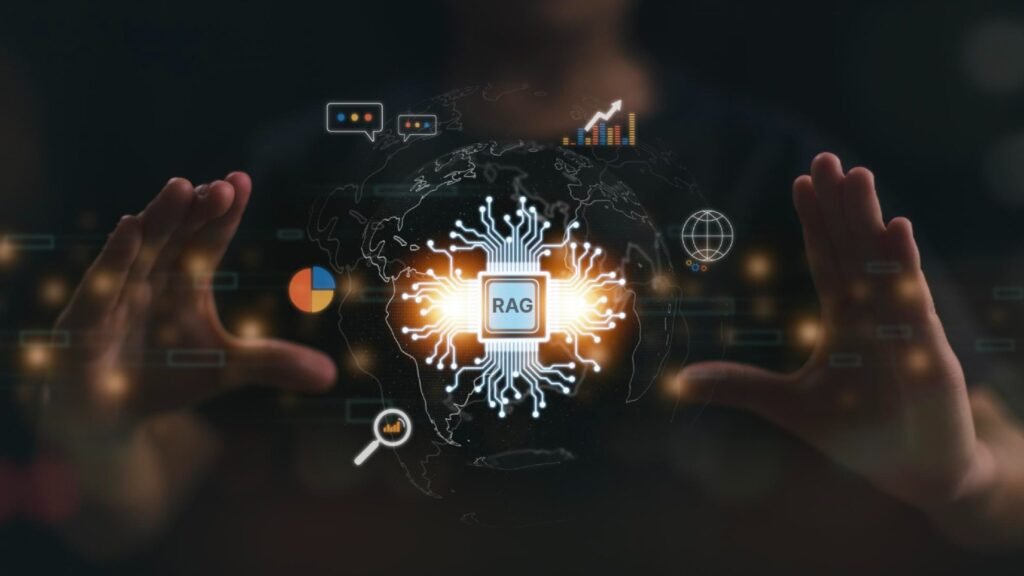In the rapidly evolving landscape of artificial intelligence, retrieval-augmented generation (RAG) has emerged as a groundbreaking technology, bridging the gap between knowledge retrieval and natural language generation. By integrating sophisticated retrieval mechanisms with advanced language models, RAG tools enhance the capabilities of AI systems, enabling them to deliver more accurate and contextually relevant responses.
For those seeking to explore the potential of RAG tools in-depth, RAG solution tools provide comprehensive insights into their practical applications and technical intricacies.
Understanding Retrieval-Augmented Generation (RAG)
Definition of RAG Technology
Retrieval-augmented generation (RAG) is a novel approach in AI that combines the strengths of information retrieval with the power of language generation. This technology allows AI systems to fetch relevant data from extensive datasets and generate articulate responses, thus improving the quality and relevance of the information provided.
Evolution of AI Information Retrieval
RAG represents a significant advancement in AI information retrieval. Traditional models relied heavily on pre-trained knowledge, which often led to outdated or irrelevant outputs. RAG overcomes this limitation by retrieving current and pertinent data before generating responses, ensuring that the information remains fresh and applicable.
Core Principles of Augmented Generation
The core principles of augmented generation involve integrating retrieval processes with generative capabilities. This synergy enhances an AI system’s ability to comprehend context, retrieve the most relevant data, and generate responses that are not only accurate but also contextually appropriate.
The Fundamental Mechanics of RAG
- How RAG Bridges Knowledge Retrieval and Generation: RAG systems operate by first retrieving pertinent data from a knowledge base and then using that data to inform the generation of responses. This dual approach ensures that responses are not only informed by the latest data but are also contextually relevant.
- Key Components of RAG Systems: A typical RAG system comprises a retriever and a generator. The retriever fetches relevant information from a vast repository, while the generator uses this information to craft coherent and contextually fitting responses.
- Difference from Traditional Language Models: Unlike traditional models that rely solely on pre-trained data, RAG incorporates real-time data retrieval, improving its relevance and accuracy.
RAG’s Technical Architecture
- Retrieval Mechanisms: At the heart of RAG systems are sophisticated retrieval mechanisms that efficiently sift through vast datasets to extract relevant information.
- Context Integration Techniques: RAG systems use advanced algorithms to ensure that the retrieved data is seamlessly integrated into the generation process, maintaining contextual coherence.
- Generation Process Optimization: By optimizing the generation process, RAG systems can produce responses that are not only accurate but also aligned with the context and intent of the query.
Revolutionary RAG Tools and Technologies
Cutting-Edge RAG Tool Landscape
The landscape of RAG tools is rapidly expanding, with numerous platforms offering innovative solutions to enhance AI systems. These tools leverage advanced retrieval and generation techniques to provide unparalleled performance and accuracy.
Key Innovations in Retrieval Technologies
Recent innovations in retrieval technologies have significantly improved the efficiency and efficacy of RAG systems. These include enhanced search algorithms and the integration of machine learning models to refine the retrieval process.
Performance Improvements Over Traditional AI Systems
RAG tools have demonstrated substantial performance improvements over traditional AI systems, particularly in terms of accuracy, relevance, and contextual understanding.
Leading RAG Tool Platforms
- Open-Source RAG Frameworks: Open-source frameworks offer flexibility and accessibility, allowing developers to customize RAG solutions to meet specific needs.
- Enterprise-Grade RAG Solutions: These solutions provide robust, scalable platforms designed to handle large-scale data retrieval and generation tasks, making them ideal for enterprise applications.
- Comparative Performance Analysis: Studies have shown that RAG tools outperform traditional models in various metrics, offering enhanced accuracy and efficiency.
Advanced Retrieval Techniques
- Vector Database Technologies: The use of vector databases has revolutionized the retrieval process, enabling faster and more accurate data extraction.
- Semantic Search Improvements: Semantic search capabilities allow RAG systems to understand the intent behind queries, improving the relevance of retrieved information.
- Context-Aware Retrieval Methods: By incorporating context into the retrieval process, these methods enhance the accuracy and relevance of the information provided.
Real-World Applications and Future Potential
Current Industry Use Cases
RAG tools have found applications across various industries, transforming how organizations manage and utilize information.
Transformative Potential Across Sectors
The potential of RAG technology extends across multiple sectors, from healthcare and finance to customer service and beyond, offering numerous opportunities for innovation and efficiency improvements.
Challenges and Future Development Paths
Despite its promise, RAG technology faces challenges such as scalability, data privacy, and ethical considerations. Addressing these challenges will be crucial for its future development and widespread adoption.
Industry-Specific RAG Implementations
- Enterprise Knowledge Management: RAG tools enhance knowledge management by providing accurate and timely information retrieval, improving decision-making processes.
- Customer Support Automation: By automating customer support, RAG systems can provide accurate responses and improve user satisfaction.
- Research and Development Applications: In R&D, RAG tools facilitate the discovery of new insights and the synthesis of complex information.
Emerging Trends in RAG Technology
- AI Ethics and Responsible Deployment: As RAG tools become more prevalent, ensuring ethical and responsible use is paramount.
- Multimodal Retrieval Capabilities: The integration of multimodal retrieval capabilities allows RAG systems to process and generate information from various data types, enhancing versatility.
- Scalability and Performance Optimization: Continuous advancements are being made in optimizing the scalability and performance of RAG systems, ensuring they can handle increasing data volumes efficiently.
RAG tools are revolutionizing the field of retrieval-augmented generation, offering smarter and more efficient AI systems. By bridging the gap between data retrieval and generation, they pave the way for innovative applications and improved performance across diverse sectors. As the technology evolves, its potential to transform industries and improve decision-making processes will continue to expand.

